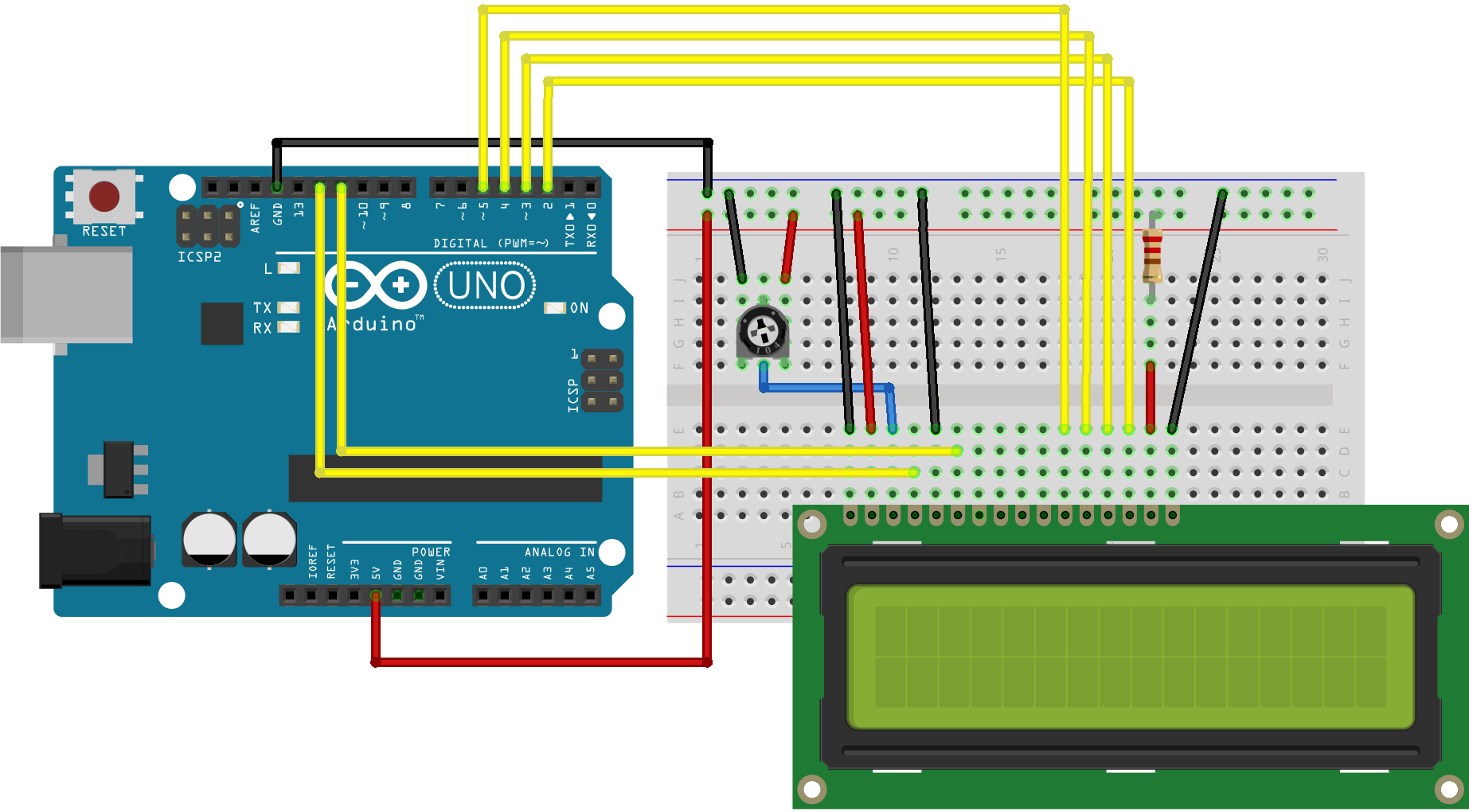

Wire library arduino uno series#
Connect your 16 LEDs and resistors in series on separate lines.Connect your MCP23017 to the center of your breadboard over the vertical break, orient the chip such that Pin 1 is at the top left and Pin 24 is at the top right.This convention of increasing counter-clockwise will be the same for all DIP ICs we use. That’s almost everything we need to get started with our circuit. The legs of the IC are labeled as follows: Pin 1 is left of indent on the top of IC, pin 14 is the bottom left pin, pin 15 in the bottom right pin and pin 24 is the top right pin. This table represents what each leg of the IC we are using is for. The only relevant Arduino Pins in this project are: If you google for the datasheet of the part and search through it, you will find that the MCP allows us to set the last 3 bits of its 7-bit address (see pins 15-17 in Fritzing Sketch). The MCP is a 28 Pin, DIP IC that we are going to use as a slave in our LED circuit. We will add the concept of a simple 8-bit binary counter, making our I☬ device control a 16-bit binary counter with 16 LEDs, each representing one bit on the counter. Today we will be using I☬ to build upon that same design, this time controlling 16 LEDs with a 28 Pin Input/output expander called the MCP23017. If you remember the SPI tutorial, we controlled 8 LEDs with an 8-Pin Shift Register using SPI principles. Supports a multi-master system, rather than SPI’s one master, infinite-slaves system.This effectively ends data transfer on the bus. When the master is finished sending the data, it will set the clock line high and reset the data line to high. After the ACK bit, the master begins sending data 1 byte at a time and waits for the acknowledge bit from the slave. The slave device then sends back an Acknowledge bit, letting the master know it is on the bus and ready for communications. We send the address byte after our start condition the first 7 bits is the address with the final bit being a read/write bit. This alerts all devices on the bus that we are about to begin communications. We start the communications on our bus by sending the data line low and holding the clock signal high. With each device that uses I2C on the same bus needing an address. So how do we differentiate between our 1008 devices? We give them all a unique 7-bit address. The bus refers to the family of integrated circuits we are communicating between and the limit for how many devices can ‘be on’ one bus is 1008. I☬ is a multi-master system, meaning you can have more than one master controlling data being sent on the bus. Every signal line has an internal pull-up resistor that drive the line back to high when a device is using it. This means that they are only able to pull the line low, eliminating the risk of bus contention which can damage components. The slave devices will sample a bit from the data stream in synchronization with this signal.ĭevices that use I☬ are “open drain” on the data signal. A clock signal (SCL) – This is purely for regulating the speed the data is sent.Everything is sent on this signal and can be sent anywhere on the bus.

Data signal (SDA) – This is where all of our control information and data is sent/received.I☬ uses 2 signals for transferring data between devices, this halves the SPI’s 4 wire communication protocol.
Wire library arduino uno serial#
In the past we have investigated the SPI and Asynchronous Serial Communications protocols for this purpose, check them out before we delve into the new topic of I☬ communications. I☬ stands for the inter-integrated circuit and refers to a communication protocol we are going to use to communicate between our Arduino devices. PiicoDev OLED Display Module (128圆4) SSD1306 Price: $13.60Īnderson 5m Extension Lead (8AWG) Price: $78.50Īnderson Cable Dual Adapter (8AWG Splitter) Price: $30.80Īnderson to 10mm Eye-Ring Terminals (8AWG) Price: $15.60


 0 kommentar(er)
0 kommentar(er)
